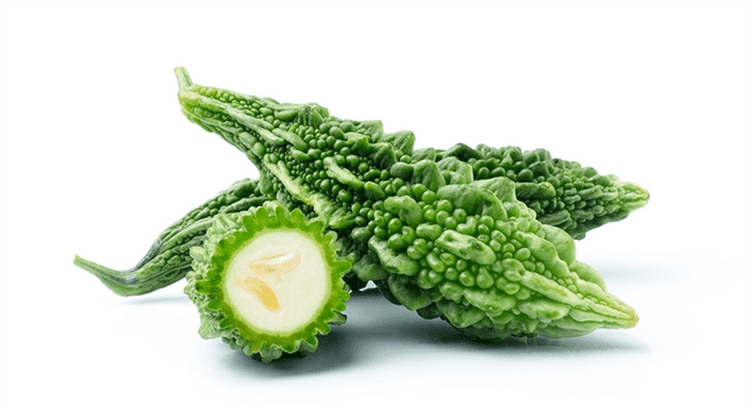BACKGROUND
Ingredient Type: Botanical
Also Known As: Momordica charantia L., Bitter melon fruit extract, Karela

Bitter melon (Momordica charantia L.) is native to the tropics and has been used for centuries as a therapeutic agent in Asia, Africa, and Latin America. Traditionally the fruit of the bitter melon has been used to treat diabetes, psoriasis, infertility, gastrointestinal cramps, infections, and cancer. It is most frequently used today, however, to help manage blood sugar. Teas made from the stems and leaves of the bitter melon plant are also used medicinally.
Bitter melon is also consumed as a foodstuff and is found as an ingredient in some south Asian curries. The raw fruit is available in specialty Asian markets where it is known as karela.
TRADITIONAL USES
Bitter melon is used in health supplements today as blood sugar support due to the fact that it contains a chemical that acts like insulin in the body.
Orally, bitter melon is used to treat diabetes, psoriasis, gastrointestinal upset, ulcers, colitis, constipation, intestinal worms, urinary tract stones (kidney stones), fever, and hepatic disease. It is also used orally to induce menstruation and as supportive therapy for patients with AIDS/HIV.
WHAT DOES SCIENCE TELL US?
Bitter Melon Possibly Helps Improve Blood Glucose:
Some preliminary research shows that bitter melon fruit, fruit juice, and fruit extract improves glucose tolerance, reduces blood glucose levels, and lowers glycosylated hemoglobin (HbA1C) in patients with type 2 diabetes (1,2,3,4,5).
SAFETY
Extracts of bitter melon fruit appear to be safe when used orally and appropriately for up to 3 months.
REFERENCES
- Leatherdale B, Panesar RK, Singh G, et al. Improvement in glucose tolerance due to Momordica Charantia. Br Med J (Clin Res Ed). 1981;282;1823-1824.
- Welihinda J, et al. Effect of Momordica charantia on the glucose tolerance in maturity onset diabetes. J Ethnopharmacol. 1986;17:277-282.
- Srivastava Y, Venkatakrishna-Bhatt H, Verma Y, et al. Antidiabetic and adaptogenic properties of Momordica charantia extract: an experimental and clinical evaluation. Phytother Res. 1993;7:285-289.
- Baldwa VS, Bhandari CM, Pangaria A, Goyal RK. Clinical trial in patients with diabetes mellitus of an insulin-like compound obtained from plant sources. Ups J Med Sci. 1977;82:39-41
- Ahmad N, Hassan MR, Halder H, Bennoor KS. Effect of Momordica charantia (karolla) extracts on fasting and postprandial serum glucose levels in NIDDM patients. Bangladesh Med Res Counc Bull. 1999;25:11-13
- Bitter melon. Natural Medicines Comprehensive Database. http://naturaldatabase.therapeuticresearch.com/nd/Search.aspx?cs=&s=ND&pt=100&id=795&fs=ND&searchid=63367660. Accessed March 7, 2018.
See the MedlinePlus entry for bitter melon or the Michigan Medicine Health Library entry for bitter melon for more information.









